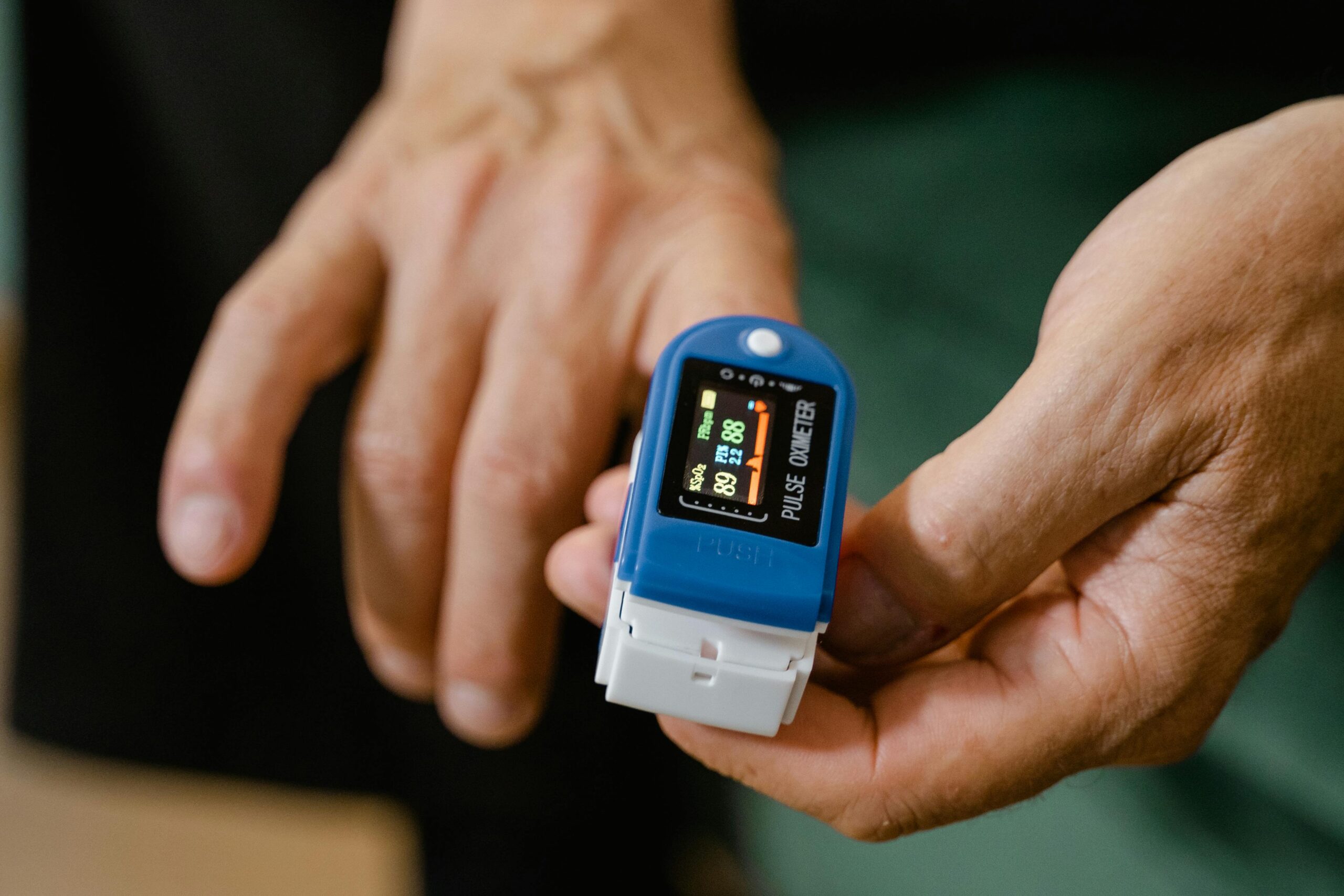Introduction to Pulse Oximeter Health Benefits
Did you know that monitoring your health could be as simple as clipping a small device onto your finger? A pulse oximeter might just be one of the most underrated tools for tracking your health, especially if you’re interested in respiratory wellness, fitness tracking, or simply staying ahead of health risks.
What Is a Pulse Oximeter? Understanding Its Role in Health Monitoring
A pulse oximeter is a small, clip-like device that checks your blood oxygen level (SpO₂) and pulse rate in seconds. Whether you’re working out, dealing with a chronic illness, or recovering from a cold, this device provides an easy way to see how much oxygen is circulating in your blood and whether your heart rate is normal.
How a Pulse Oximeter Works: The Science Behind Tracking Oxygen Levels
When you place the pulse oximeter on your fingertip or earlobe, it shines light beams through your skin to measure oxygen levels in your blood. Here’s the magic: oxygenated blood absorbs light differently from deoxygenated blood. So, by analyzing this light absorption, the device can tell you just how well oxygenated your blood is.
Key Benefits of Using a Pulse Oximeter for Your Health
Using a pulse oximeter has some huge benefits:
- Quick Health Check: With a pulse oximeter, you get instant insights into your respiratory health, helping you spot issues like shortness of breath or fatigue early.
- Track Your Fitness Progress: Many athletes and fitness enthusiasts use pulse oximeters to measure how their bodies respond to exercise. Knowing your oxygen levels helps track recovery time and adjust workouts.
- Peace of Mind for Respiratory Conditions: People with conditions like asthma or COPD find it especially useful, as it allows for quick, at-home monitoring.
Who Can Benefit from Pulse Oximeter Monitoring?
Anyone can benefit, but pulse oximeters are particularly helpful for:
- People with Respiratory Issues: Monitoring for conditions like asthma or chronic obstructive pulmonary disease (COPD).
- Fitness Enthusiasts: Helping athletes measure recovery and adjust workouts.
- At-Home Health Monitoring: Those who want an easy way to track health at home without frequent doctor visits.
Tips for Accurate Pulse Oximeter Readings
- Stay Still: Movement can impact accuracy, so stay still while taking a reading.
- Know Your Norm: Healthy blood oxygen levels are usually between 95-100%. Anything below 90% should be a sign to consult a doctor.
Innovations in Pulse Oximeter Technology: Enhancing Health Tracking
Pulse oximeters today come with advanced features:
- Bluetooth and App Integration: Allowing you to save and share your readings with healthcare providers.
- AI-Based Insights: Some pulse oximeters analyze data over time, spotting trends and giving personalized insights.
Conclusion: The Essential Role of Pulse Oximeters in Health Management
A pulse oximeter is more than just a gadget; it’s a powerful tool for proactive health management. Whether you’re tracking your fitness journey or managing a health condition, having quick, reliable info on your oxygen levels and pulse rate can make a real difference.
Discover More Ways to Elevate Your Health!
Ready to take your health journey to the next level? Check out these related articles that dive deeper into how technology is shaping personalized healthcare:
- AI in Personalized Medicine: Tailoring Treatments Just for You
Uncover the power of artificial intelligence in creating personalized treatment plans that fit your unique health needs. - Wearable Tech: Your Health’s New Best Friend
Explore the exciting world of wearable technology and see how these innovative devices can help you track your health effortlessly.
Empower yourself with knowledge and tools that can enhance your well-being! Happy reading!

